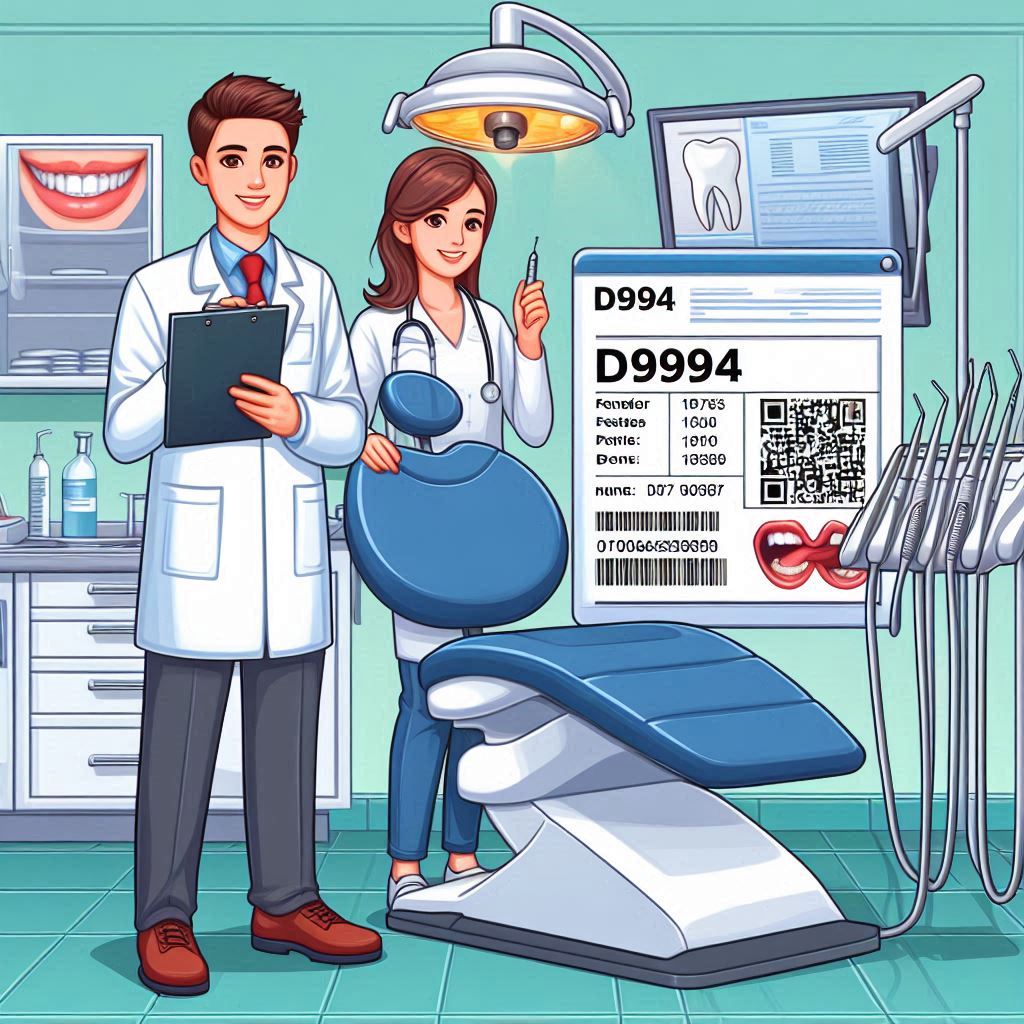D9994 Dental Code
Navigating dental billing codes can be overwhelming for both patients and dental professionals. One such code, D9994, plays a crucial role in dental billing but is often misunderstood. Whether you’re a dentist looking to ensure accurate billing or a patient curious about what this code means for your treatment, this guide will provide an in-depth exploration of D9994, its applications, insurance implications, and more.
This article will break down everything you need to know about D9994, ensuring clarity and helping you make informed decisions regarding dental care and billing.

2. What is the D9994 Dental Code?
The D9994 dental code is a billing code used in dental practices to classify a specific type of service. According to the American Dental Association (ADA), D9994 falls under the “Adjunctive General Services” category and is defined as:
“D9994 – Teledentistry – synchronous; real-time encounter”
This means it applies to real-time, interactive teledentistry services where a dentist and patient communicate via video or phone for consultation, diagnosis, or follow-up.
Key Features of D9994:
- Used for live, interactive dental consultations.
- Does not apply to pre-recorded or asynchronous communications.
- Often used for remote evaluations, follow-ups, and emergency consultations.
3. Purpose and Applications of D9994
Teledentistry has become increasingly popular, especially after the COVID-19 pandemic, as it allows patients to receive dental care without physically visiting a clinic. The D9994 code facilitates:
- Remote Diagnoses: Dentists can assess issues like tooth pain, gum swelling, or post-operative healing via video call.
- Follow-Up Consultations: Patients recovering from procedures can check in without an in-person visit.
- Emergency Triage: Helps determine if a patient needs immediate in-person care.
- Accessibility for Rural Patients: Those in remote areas can consult specialists without travel.
Example Scenario:
A patient experiencing tooth pain contacts their dentist via a telehealth platform. The dentist evaluates symptoms in real time, determines it’s a minor issue, and prescribes antibiotics—all billed under D9994.
4. When is the D9994 Code Used?
The D9994 code is appropriate in the following situations:
| Scenario | Appropriate Use of D9994? |
|---|---|
| Live video consultation for toothache | ✅ Yes |
| Pre-recorded message sent to a dentist | ❌ No (Use D9995 instead) |
| Phone call follow-up after extraction | ✅ Yes (If real-time) |
| Email consultation | ❌ No |
When NOT to Use D9994:
- Asynchronous communication (use D9995 instead).
- Non-interactive services (e.g., reviewing X-rays sent via email).
5. Differences Between D9994 and Other Dental Codes
Several teledentistry codes exist, and understanding their distinctions is crucial for accurate billing:
| Code | Description | Key Difference |
|---|---|---|
| D9994 | Synchronous (real-time) teledentistry | Requires live interaction |
| D9995 | Asynchronous (store-and-forward) teledentistry | Pre-recorded data review |
| D0140 | Limited oral evaluation | In-person only |
6. Insurance Coverage and Reimbursement for D9994
Insurance coverage for D9994 varies:
- Medicaid: Many states now reimburse for teledentistry.
- Private Insurance: Some plans cover D9994, while others classify it as non-essential.
- Out-of-Pocket Costs: If insurance denies, patients may pay 50–50–150 per session.
Tips for Maximizing Reimbursement:
✔ Verify coverage with the insurer beforehand.
✔ Document the necessity of the virtual visit.
✔ Use ADA-approved billing software.
7. Common Misconceptions About D9994
❌ “D9994 is only for emergencies.”
✅ Fact: It can be used for routine follow-ups too.
❌ “All teledentistry is billed under D9994.”
✅ Fact: Only real-time interactions qualify.
❌ “Insurance never covers D9994.”
✅ Fact: Many insurers now reimburse it.
8. How Dentists Document and Report D9994
Proper documentation is essential for compliance:
- Record the date, time, and duration of the session.
- Note the patient’s chief complaint and findings.
- Store the video/audio recording (if legally permitted).
- Submit the claim with supporting notes to avoid denials.
9. Case Studies: Real-World Applications of D9994
Case Study 1: Post-Op Follow-Up
A patient recovering from wisdom tooth extraction had swelling concerns. A 10-minute video call (D9994) confirmed normal healing, avoiding an unnecessary office visit.
Case Study 2: Emergency Triage
A rural patient with severe tooth pain used D9994 for evaluation. The dentist identified an abscess and referred them to an emergency clinic.
10. Patient FAQs About D9994
Q: Does D9994 cost less than an in-person visit?
A: Often yes, but check with your provider.
Q: Can I use D9994 for orthodontic check-ups?
A: Yes, if the orthodontist offers live telehealth.
Q: Will Medicare cover D9994?
A: Medicare does not typically cover dental codes, but some Advantage plans might.
11. Conclusion
The D9994 dental code is a vital tool for modern teledentistry, enabling real-time consultations that save time and improve access to care. Understanding its proper use, insurance implications, and documentation requirements ensures smooth billing and better patient experiences. As telehealth grows, D9994 will continue to play a key role in dental practices nationwide.
12. Additional Resources
- ADA Teledentistry Guidelines
- Medicaid Teledentistry Policies by State
- Dental Billing Software for D9994 Claims


